Category: Q&A — Published:
As winner of the 8th Max Mara Art Prize for Women, artist Emma Talbot (b. 1969, UK) has spent the last 6 months exploring Italy on her residency, organised by the Collezione Maramotti. Her journey has taken her to Reggio Emilia, where she worked with local craftspeople to learn Intarsia, a form of jacquard knitting used to create patterns with multiple colours. She then went to Sicily where she learned about permaculture, a practice central to local agriculture which offers sustainable and ethical ways of living with the land.
Now in Rome, Emma has been focusing on Herculean myths, spending time at Museo Nazionale Etrusco di Villa Giulia to research designs on Etruscan Pottery, which are powerful conveyors of classical mythology. Whitechapel Gallery Curator Laura Smith met with Emma to discuss what she’s learned, who she’s worked with and what there is to look forward to with forthcoming exhibitions at Whitechapel Gallery and the Collezione Maramotti in 2022.
Be sure to sign up as a Whitechapel Gallery Member to receive an exclusive invitation to meet Emma on 25 November and hear all about how her work has been developing.
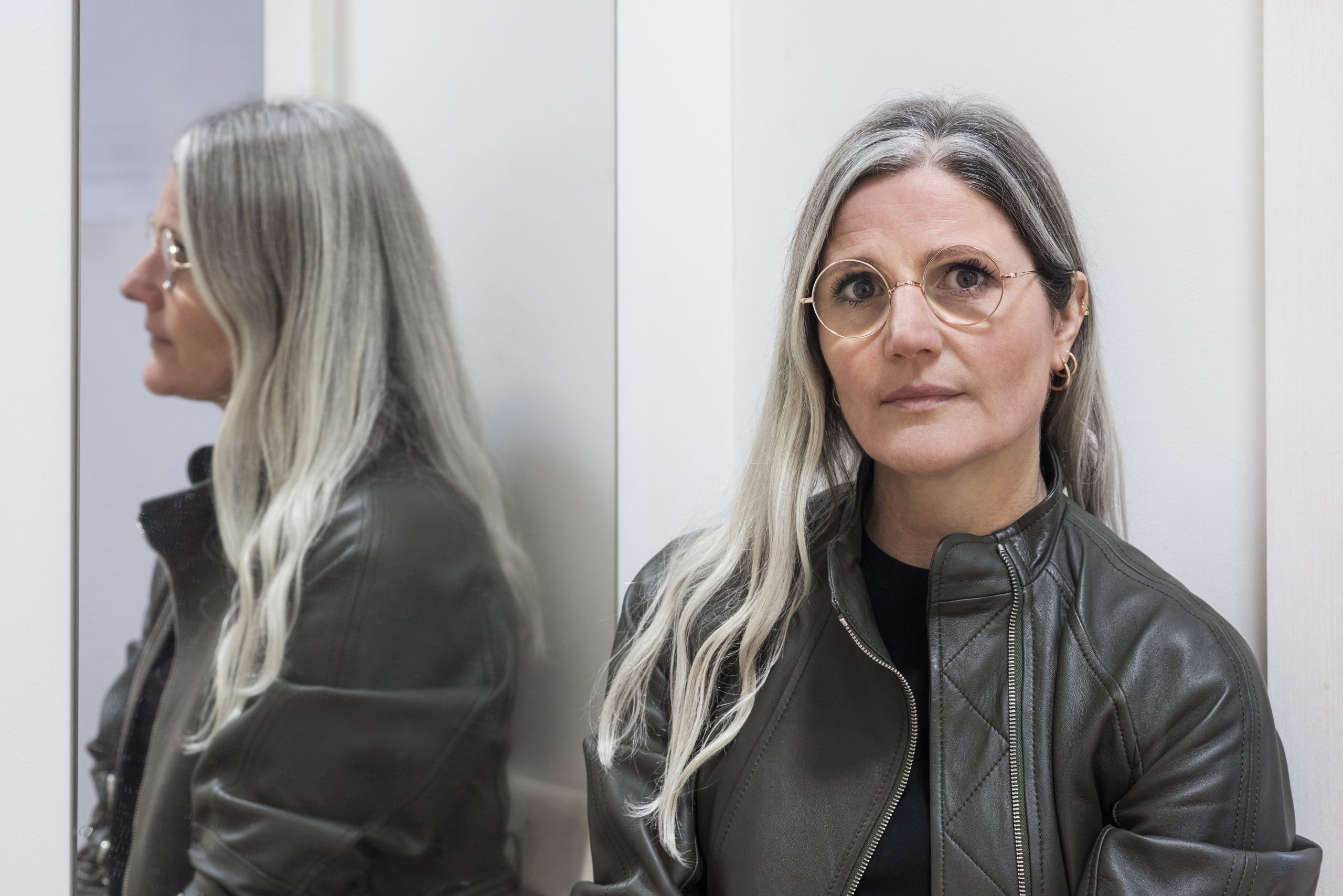
This most recent portion of your residency has brought you to the British School at Rome. Could you describe your experience of working in Rome, what you’ve learned and how it might impact on your final work for Whitechapel Gallery?
I’m fortunate to be able to spend time in a beautiful studio here in Rome, one where I feel like I can really work. It’s very central, right next to the Borghese Gardens. I’ve been in Rome a few times before, but this time has been my best experience – I feel very at home here – and I’ve really loved exploring more of the city. I’ve been focusing on looking at imagery of Hercules, which has taken me to many museums and ancient sites. It has been fascinating to learn about the way the myth of Hercules changed over time and the ways myths are always subject to adaptation to suit the times in which they’re recounted.
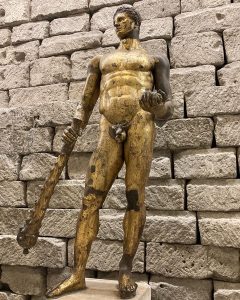
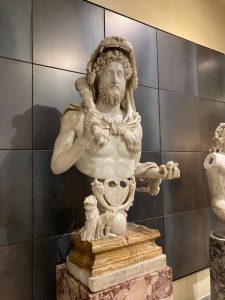
An important aspect of your research in Rome is visiting Gustav Klimt’sThe Three Ages of Woman, 1905, which is in the collection of the Galleria Nazionale d’Arte Moderna, Rome and was an early inspiration for your entire Max Mara project. How was seeing the painting in real life? And how has, and will, the painting influence your work for this exhibition?
It was the first time I’ve seen the painting in real life, and, as an important starting point for my project, it was quite a profound experience. I found it even more interesting than I’d imagined, because I could see the materiality, experience the scale and really investigate the depiction of the elderly woman, who I am taking inspiration from as a protagonist in the work I’m making. There’s also a survey exhibition on Klimt and Italy at present in Rome, which is very timely and has been valuable for my research.
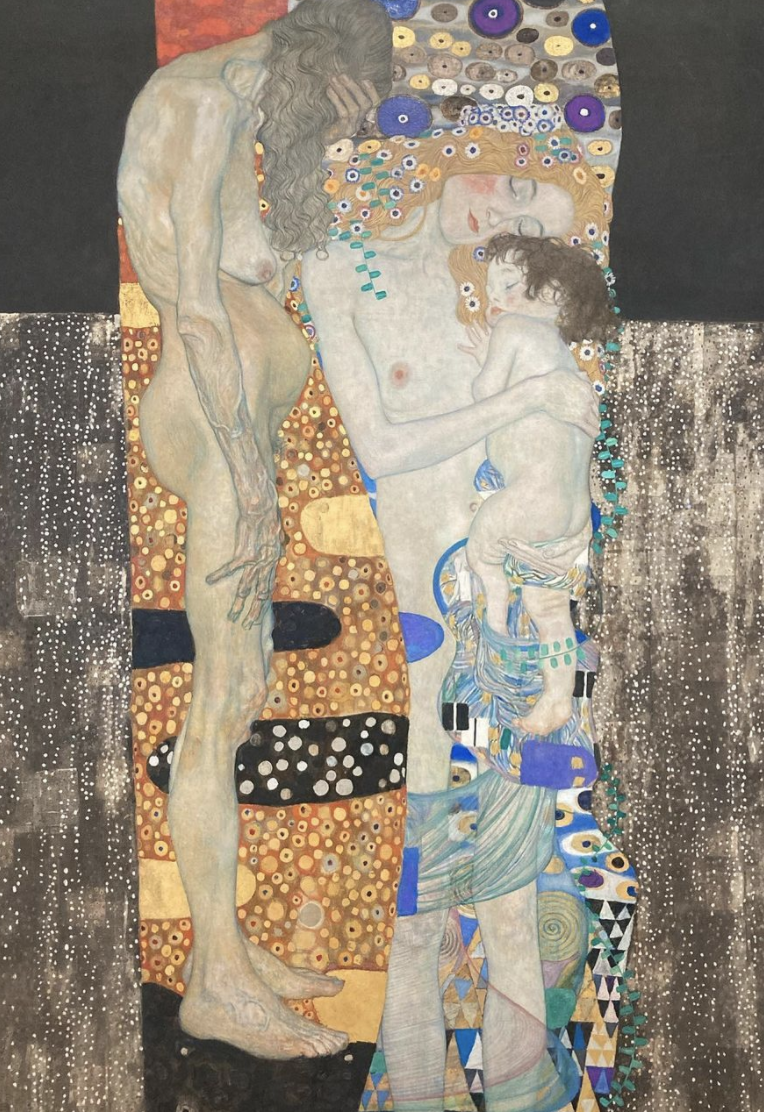
You’ve also spent time at the Museo Nazionale Etrusco di Villa Giulia researching Etruscan pottery. Can you share what you are researching and how this is informing your final work?
I’m looking particularly at images of Hercules, as depicted on Etruscan pottery, as I want to imagine and narrate the elderly woman protagonist performing the tasks of Hercules, to challenge the structures of power. There’s a relationship between Klimt’s language and Etruscan imagery and I find the aesthetics and history of Etruscan object and image making fascinating. There’s such a strong graphic communication in Etruscan pottery, which is impressive and informs my thinking.
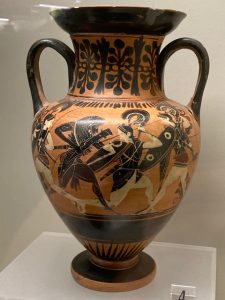
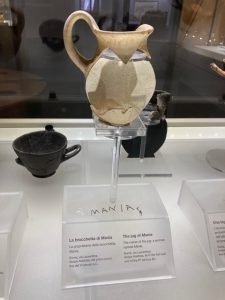
How has the landscape (and its history) on this portion of your journey influenced your practice?
I’ve been able to visit Naples, Pompeii, Ercolano, Paestum as well as Rome, so this last month has been very rich and intensely focused on layers of history as well as the living, contemporary experience of great Italian cities. The way that ancient history is imbedded and present in the everyday is obviously a hugely influential element.
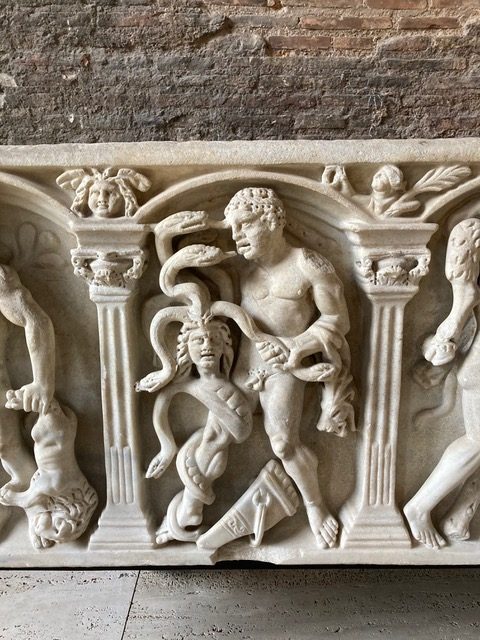
As your residency comes to a close, can you share any pieces of wisdom from your travels? Has this opportunity made you think about the process of making differently?
I’m so sad to think of my residency coming to an end, I’ve really loved it and being in Italy. Learning the language and being able to communicate made a big difference. I decided to be open to all the experiences of the residency, and have made great friends, had wonderful experiences and have really been able to appreciate the rich complexity of the places where I’ve spent time. I’ve been able to consider the materiality of my work in depth and have gained an understanding of a different context for making and thinking, which I hope to pursue further.
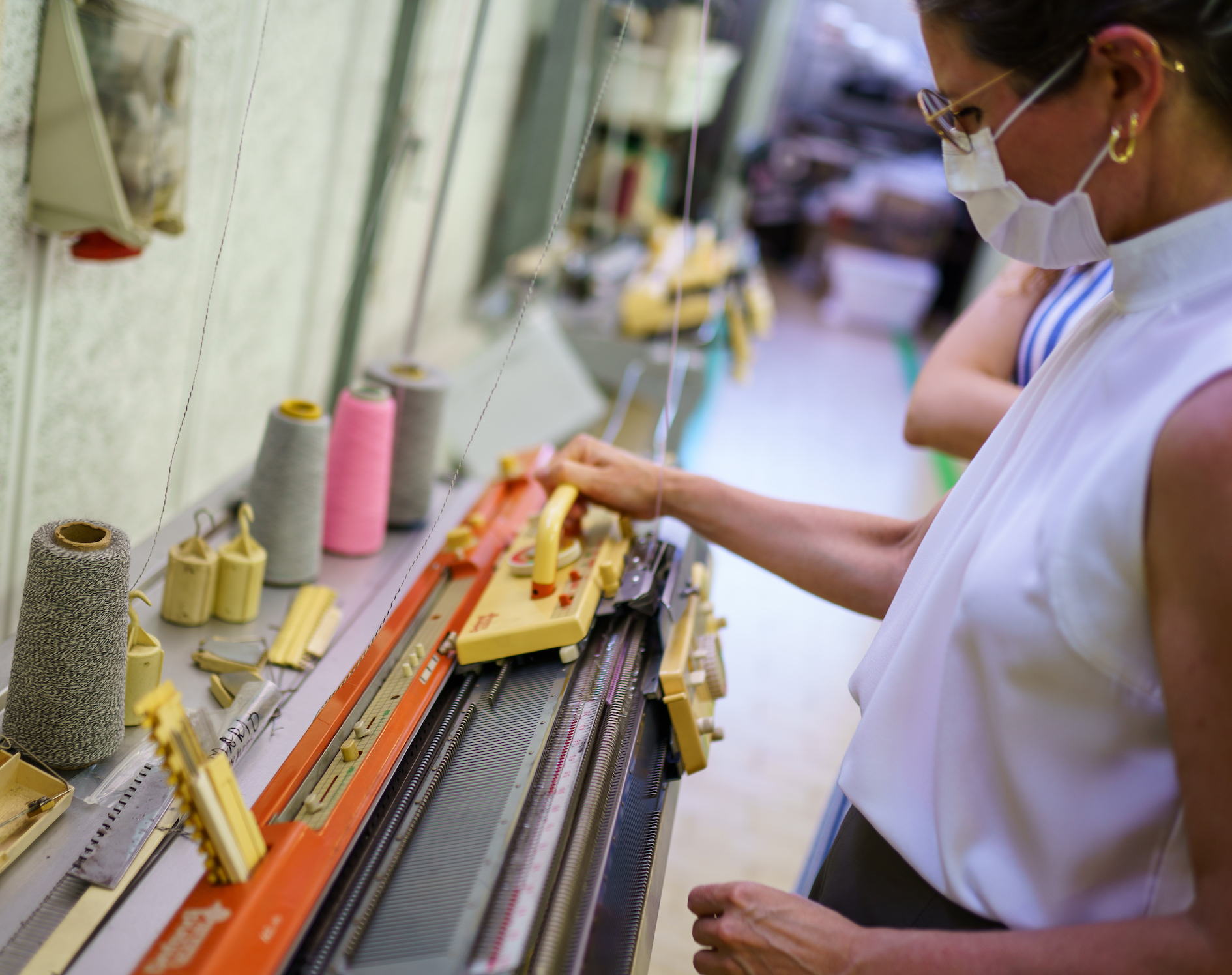
For our readers inspired by your stops in Reggio Emilia, Catania and Rome, can you share your recommended stops or hidden gems?
There are far too many to list in full, but highlights have to include Villa Giulia in Rome, Prada Foundation, Milan, Museo Madre, Naples, Gardens of Bomarzo, Viterbo, Villa of the Mysteries, Pompeii, Burri’s Cretto, Gibellino, Sicily, Museo Civici, Reggio Emilia, Lottozero, Prato and of course there has to be some food: Vuciata Restaurant, Catania, Herbe, Reggio Emilia.
Is there anything you would like to add to close this series of residency check-ins? Has anyone left a particularly strong mark on your experience in Italy?
I’ve had Valentino Nizzo as a mentor here in Rome. He’s the director of the Museo Nazionale Etrusco di Villa Giulia, one of my favourite museums. His expert knowledge and enthusiasm lends a brilliant aspect to our visits and it has been such an amazing experience to have his input, to understand the historical context for my project.
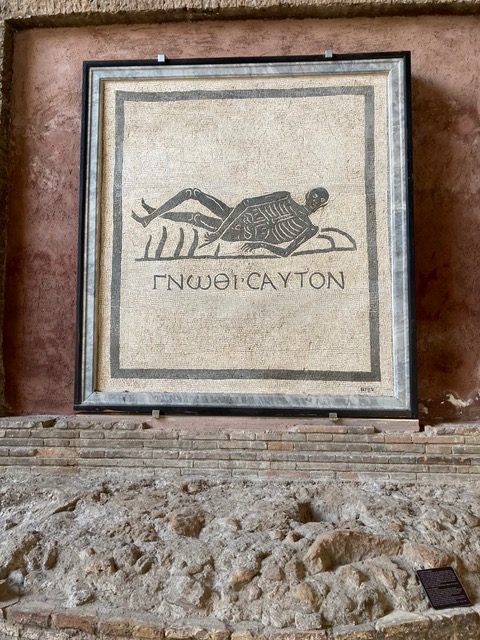
The Max Mara Art Prize for Women was established by Whitechapel Gallery in collaboration with the Max Mara Fashion Group in 2005, and with the participation of Collezione Maramotti from 2007. Its aim is to promote emerging female artists based in the UK, enabling them to develop their potential with the gift of time and space; and to inspire new artistic perspectives on 21st century Italy.
The winner is awarded a six month Italian residency, organised by Collezione Maramotti, tailored to fit the artist and their winning proposal for the Prize. During the residency the artist has the opportunity to realise an ambitious new project which is presented in major solo exhibitions at the Whitechapel Gallery in London and Collezione Maramotti in Reggio Emilia, Italy.